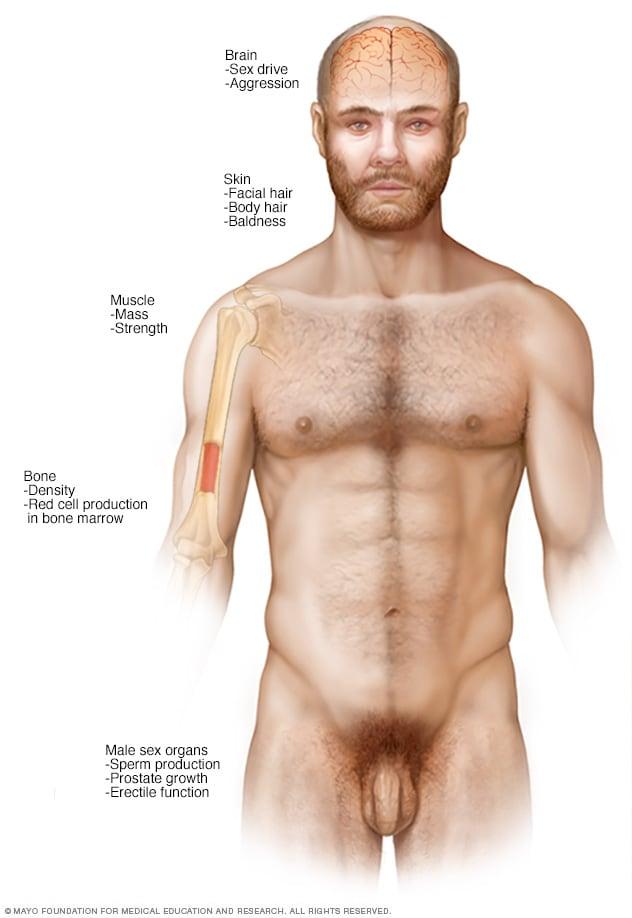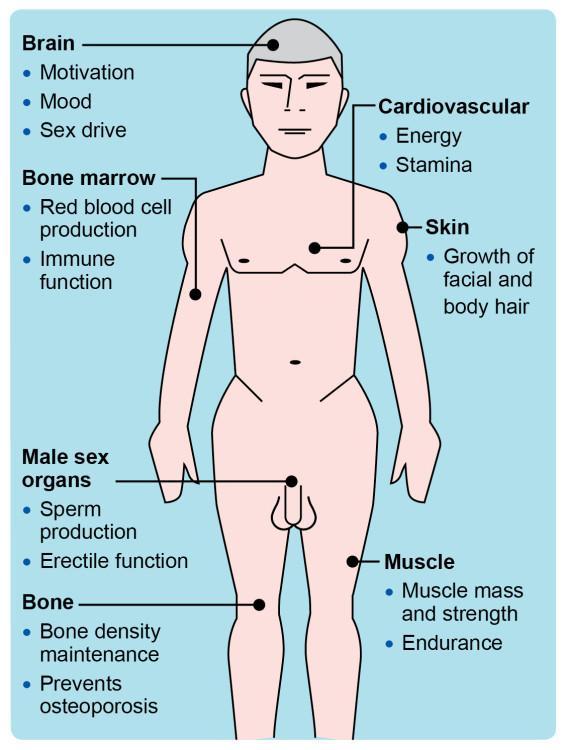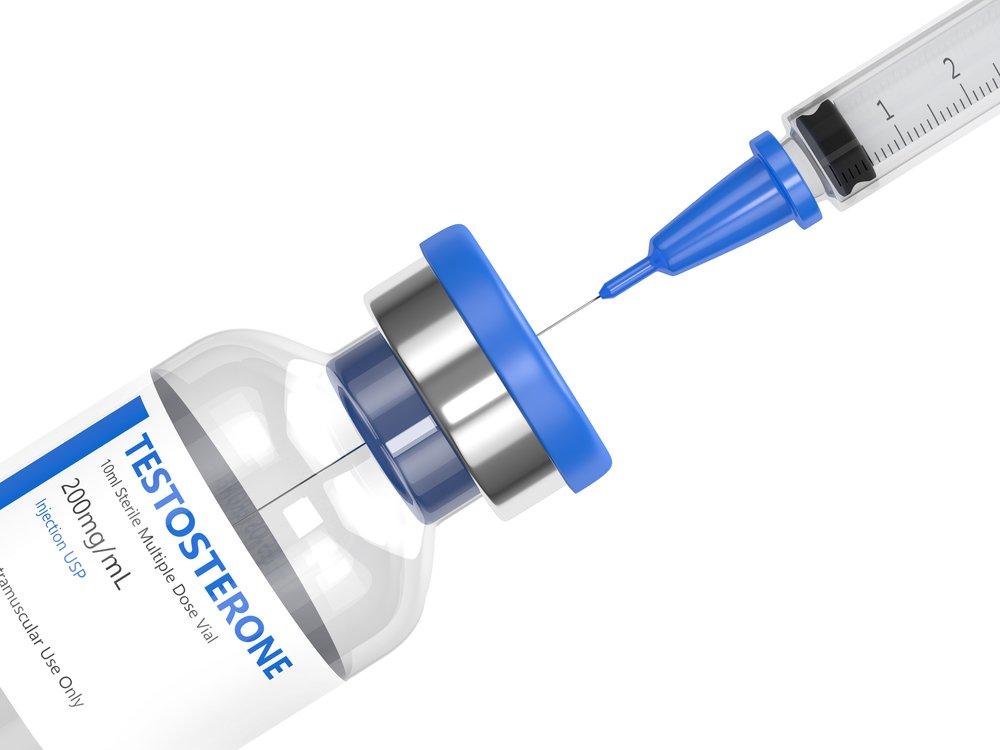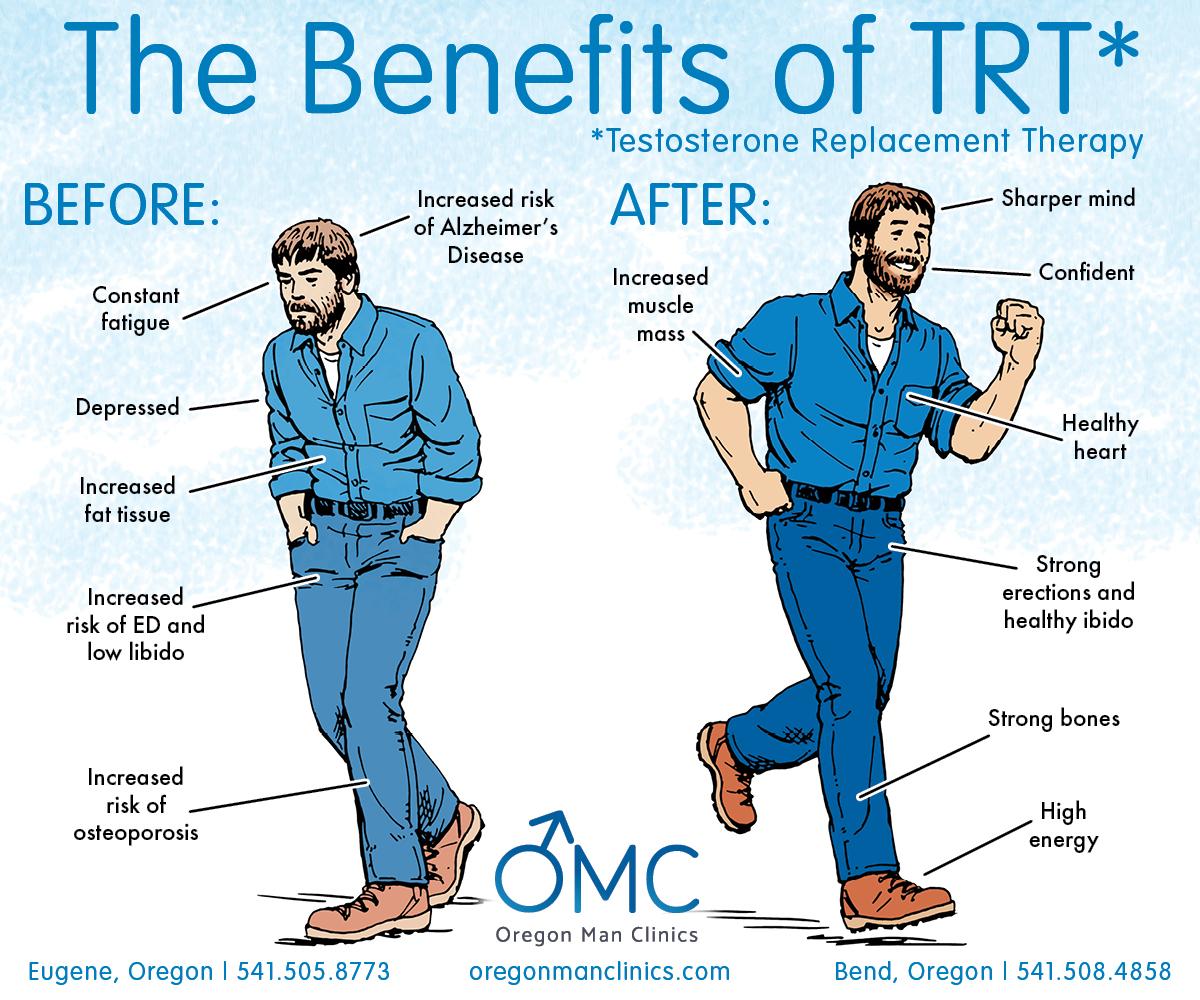Title: The Clock and the Chemistry: Understanding the Duration of Testosterone Therapy
In the intricate realm of hormone therapy, testosterone stands out as a critical player, wielding influence over mood, energy, and overall health. For those grappling with low testosterone levels, embarking on a therapy regimen can feel like stepping into a new chapter of life—one filled with potential revitalization and renewed vigor. Yet, amidst the excitement, a pressing question often arises: How long will this transformative journey last? This article delves into the nuances of testosterone therapy, exploring the factors that dictate its duration, the biological rhythms of the body, and the experiences of those who have navigated this path. Join us as we uncover the realities behind testosterone therapy, and equip yourself with the knowledge necessary to make informed decisions about your health and well-being.
Understanding Testosterone Therapy Duration
When considering testosterone therapy, it’s crucial to recognize that the duration of treatment can significantly influence its effectiveness and the individual’s overall well-being. Therapy generally ranges from short-term cycles to long-term plans, depending on personal goals and medical advice. Factors influencing the length of therapy include age, severity of testosterone deficiency, response to treatment, and any underlying health conditions. Many individuals experience noticeable improvements within a few weeks, while others may need several months to see optimal results. Regular check-ups with a healthcare provider are essential to monitor progress and make necessary adjustments.
Typically, testosterone therapy can be categorized based on administration methods, each with its own duration profile:
| Administration Method | Duration of Effect |
|---|---|
| Injection | 1 to 3 weeks |
| Patches | 24 hours |
| Gels | 24 hours |
| Pellets | 3 to 6 months |
Understanding these differences helps patients and doctors decide on a suitable regimen tailored to individual needs. Continuous evaluation is vital to ensure the therapy remains effective, allowing adjustments in dosage or method based on response and lifestyle changes.

Factors Influencing the Effectiveness of Testosterone Treatment
Several elements contribute to the success of testosterone treatment, impacting both its duration and efficacy. Age, for instance, plays a significant role; younger patients may experience a more pronounced response than older individuals. Additionally, baseline testosterone levels at the start of therapy can influence outcomes—those with severely low levels often notice greater improvements compared to those with marginal deficits. The method of administration is also crucial; options include injections, patches, gels, or implants, each delivering different absorption rates and ultimately affecting therapy duration.
Moreover, individual factors such as overall health, lifestyle choices, and concomitant medications can also impact treatment effectiveness. For example, patients who maintain a healthy diet and exercise routine may experience enhanced results. Psychological aspects, such as motivation and compliance, are equally vital, as a committed patient is more likely to adhere to their prescribed regimen. A healthcare provider’s experience and familiarity with testosterone treatment can further influence the regimen’s success, tailoring it to the patient’s unique needs and circumstances.

The Initial Phase of Testosterone Therapy
is a critical period that sets the stage for the journey ahead. Patients typically begin to notice changes within the first few weeks, although the timeline can vary significantly among individuals. During this phase, the body is adjusting to the introduction of testosterone, leading to both physiological and psychological transformations. Some common early effects experienced include:
- Increased energy levels – Many find themselves with renewed vigor and reduced fatigue.
- Enhanced libido – A noticeable uptick in sexual desire often occurs.
- Improved mood – Positive shifts in emotional well-being are frequently reported.
As adjustments take place, monitoring and regular check-ins with healthcare providers are essential. Blood tests are often conducted to ensure testosterone levels are optimized, minimizing any potential side effects. Changes may continue to develop over a span of several months, gradually revealing the full spectrum of benefits associated with therapy. Here’s a quick overview of potential changes in various areas:
| Aspect | Initial Changes | Expected Within 3-6 Months | Potential Long-Term Effects |
|---|---|---|---|
| Physical Strength | Minimal gains | Noticeable improvement | Significant muscle mass increase |
| Mood Regulation | More stable emotions | Reduced anxiety/depression | Long-term mood enhancement |
| Metabolism | Benchmarks of basal metabolism | Improved energy utilization | Potential fat loss and lean mass gain |

Long-Term Impacts of Sustained Hormone Replacement
The administration of hormone replacement therapy (HRT), particularly testosterone therapy, can lead to a variety of long-term effects that significantly influence an individual’s quality of life and health outcomes. Over time, patients often report improvements in mood, energy levels, and muscle strength. These enhancements can contribute to better overall physical health and increased motivation for daily activities. Additionally, testosterone therapy may help maintain bone density, reducing the risk of osteoporosis in aging men, thereby promoting long-term mobility and well-being.
However, the sustained use of testosterone therapy comes with potential risks that warrant careful monitoring. Chronic exposure to elevated testosterone levels can lead to issues such as cardiovascular complications, fertility concerns, and metabolic changes like altered cholesterol levels. As such, it’s essential for individuals undergoing testosterone therapy to engage in regular check-ups and blood tests to ensure that levels remain within a safe range. Here’s a summary of some potential long-term impacts:
| Benefit | Risk |
|---|---|
| Improved mood and cognitive function | Increased risk of mood swings |
| Higher muscle mass | Possible development of sleep apnea |
| Enhanced libido | Potential fertility issues |
| Increased bone density | Higher chance of cardiovascular events |
Monitoring and Adjusting Treatment Over Time
As testosterone therapy progresses, it is crucial for healthcare providers to engage in ongoing monitoring to assess the therapy’s effectiveness and identify any necessary adjustments. Regular follow-ups allow practitioners to evaluate a patient’s response to treatment through various methods, including but not limited to:
- Symptom Checklists: Tracking physical and emotional changes over time.
- Blood Tests: Monitoring testosterone levels and other relevant biomarkers.
- Quality of Life Assessments: Using standardized surveys to measure overall well-being.
Based on the findings from these evaluations, adjustments can be made to optimize treatment outcomes. These adjustments may include changes in dosage, frequency of administration, or even the method of delivery. It’s equally important to address any side effects that may arise, which can be managed through a combination of lifestyle modifications and medical interventions. Consistent communication between the patient and their healthcare provider can enhance the effectiveness of treatment and ensure that it remains aligned with the patient’s evolving needs.
Potential Side Effects and Their Management
While testosterone therapy can offer numerous benefits, it is important to be aware of potential side effects that may arise during treatment. Common side effects include acne, mood swings, increased hair growth, and water retention. Some individuals may also experience changes in libido, sleep apnea, or issues related to cholesterol levels. Regular monitoring of these effects is crucial for anyone undergoing therapy. Healthcare providers typically recommend routine blood tests to check hormone levels and other health markers to ensure that the therapy is providing the intended benefits without causing significant harm.
Managing side effects effectively can enhance the overall experience of testosterone therapy. Strategies to address these complications may include:
- Topical treatments for acne or skin irritations.
- Medication adjustments based on hormone levels.
- Consultation with a dietitian for nutritional support.
- Mindfulness techniques for mood regulation.
- Regular exercise to maintain healthy body composition and boost mood.
It is essential for individuals to communicate openly with their healthcare providers about any side effects they experience, as personalized adjustments may be necessary to optimize therapy outcomes.
Personalizing Your Testosterone Therapy Experience
To enhance the effectiveness of testosterone therapy, it’s crucial to personalize the experience according to individual needs and lifestyle. Factors such as age, overall health, and specific symptoms can significantly influence how testosterone therapy is administered and monitored. Engaging in open dialogue with your healthcare provider is key to identifying the best therapeutic approach. They can offer tailored solutions that may include adjusting dosage, changing delivery methods, or integrating lifestyle changes like exercise and diet tailored to your personal preferences.
Additionally, keeping track of your progress is essential in optimizing therapy outcomes. Regular check-ins and hormone level assessments can form a feedback loop, allowing for adjustments based on how you feel and respond to treatment. Consider maintaining a personal log that records symptom changes, energy levels, and mood fluctuations. This record can empower you and your physician in making informed decisions moving forward. Below is a simple table to illustrate key components to monitor throughout your testosterone therapy journey:
| Component | Monitoring Frequency | Notes |
|---|---|---|
| Hormone Levels | Every 3-6 months | Ensure optimal dosage |
| Mood and Energy | Weekly | Track variances for adjustments |
| Physical Changes | Monthly | Asses body composition and strength |
Q&A
Q&A: How Long Does Testosterone Therapy Last?
Q1: What is testosterone therapy, and why do people undergo it?
A1: Testosterone therapy is a medical treatment that involves supplementing testosterone levels in individuals—typically men—who have low levels of this vital hormone. It is commonly sought to alleviate symptoms such as fatigue, reduced libido, and mood disturbances associated with low testosterone, also known as hypogonadism.
Q2: How long does testosterone therapy typically last?
A2: The duration of testosterone therapy varies significantly based on individual needs, treatment goals, and underlying health conditions. Generally, testosterone therapy can be viewed on a continuum: some individuals might require short-term treatment lasting a few months, while others may need long-term therapy that could continue for years or even a lifetime, depending on their response to treatment and their doctor’s recommendations.
Q3: Do the effects of testosterone therapy change over time?
A3: Yes, the effects of testosterone therapy can evolve. Initially, many patients may experience rapid improvements in energy levels, mood, and sexual function. Over time, as the body adjusts to the therapy, some effects may plateau. Regular monitoring and communication with a healthcare provider are crucial to assess whether dosage adjustments or changes in therapy are needed to maintain optimal benefits.
Q4: What factors influence how long testosterone therapy remains effective?
A4: The effectiveness of testosterone therapy can be influenced by several factors, including age, overall health, lifestyle choices (such as diet and exercise), and the specific method of testosterone delivery (injections, patches, gels, etc.). Additionally, the underlying cause of low testosterone plays a significant role; for example, conditions that lead to permanent hormonal changes might require indefinite treatment.
Q5: What happens if someone stops testosterone therapy?
A5: If testosterone therapy is discontinued, individuals may gradually notice a return of symptoms associated with low testosterone levels. This timeline can vary; some may feel a shift within weeks, while others may take months to notice significant changes. It’s important for anyone considering stopping therapy to consult with their healthcare provider to discuss potential risks and manage their symptoms effectively.
Q6: Are there any myths about the duration and effects of testosterone therapy?
A6: Yes, several myths exist around testosterone therapy. A common misconception is that therapy will lead to a permanent increase in testosterone levels, allowing individuals to stop treatment without repercussions. In reality, testosterone therapy typically requires ongoing management, as discontinuation can lead to a decline back to pre-treatment levels. Additionally, myths around immediate side effects or exaggerated benefits can cloud understanding; hence, professional guidance is essential.
Q7: How can someone ensure they receive best results from testosterone therapy over time?
A7: To maximize the effectiveness of testosterone therapy, individuals should engage in regular follow-ups with their healthcare provider, adhere strictly to prescribed dosages, and maintain a healthy lifestyle. Monitoring hormone levels through blood tests and addressing any arising side effects promptly are key components in ensuring optimal results and making necessary adjustments to the treatment plan.
Q8: Where can someone find more information about testosterone therapy?
A8: Individuals seeking further information about testosterone therapy should consult reputable healthcare resources, visit endocrinology or urology specialists, or reach out to support groups and organizations dedicated to hormonal health. Engaging in open dialogue with healthcare providers will also provide personalized insights tailored to individual circumstances.
To Wrap It Up
As we draw the curtain on our exploration of testosterone therapy, it becomes evident that the duration and effects of this treatment vary widely, influenced by individual circumstances and health considerations. Whether you’re contemplating starting therapy or seeking to understand its long-term implications, remember that knowledge and communication with your healthcare provider are key. By staying informed and proactive in managing your health, you can navigate the complexities of testosterone therapy with confidence. Ultimately, the journey towards balance and well-being is uniquely yours, shaped by personal goals and experiences. As you contemplate your next steps, may you find clarity and empowerment along the way.









